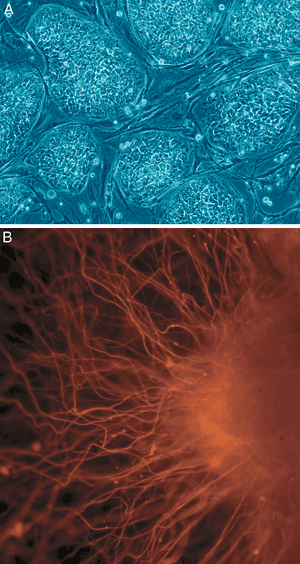A new study offers proof that stem cells can reconnect the inner ear to the brain
More than 275 million people have moderate-to-profound hearing loss, and many of those cases are caused by a breach in the connection between the inner ear and the brain.
Researchers have now shown how to repair a key component of that connection — the auditory nerve — by using human embryonic stem cells to restore hearing in gerbils. “We have the proof of concept that we can use human embryonic stem cells to repair the damaged ear,” says lead author Marcelo Rivolta, a stem-cell biologist at the University of Sheffield, UK, whose research appears in Nature today. “More work needs to be done, but now we know it’s possible.”
Stem cells have been differentiated into auditory nerve cells before, but this is the first time that transplanted cells have successfully restored hearing in animals. Some in the field say that it is a pivotal step that will undoubtedly spur more research. “Research has been stymied by reviewers wanting evidence that stem cells can connect the inner ear to the central nervous system,” says Richard Altschuler, a developmental biologist at the Kresge Hearing Research Institute at the University of Michigan in Ann Arbor.
Rivolta has spent the past decade developing ways to differentiate human embryonic stem cells into the two cell types that are essential for hearing: auditory neurons, and the inner-ear hair cells that translate sound into electrical signals.
He treated human embryonic stem cells with two types of fibroblast growth factor (FGF) — FGF3 and FGF10 — to produce two, visually distinct, groups of primordial sensory cell. Those that had characteristics similar to hair cells were dubbed otic epithelial progenitors (OEPs), and those that looked more like neurons were dubbed otic neural progenitors (ONPs).
His team then transplanted ONPs into the ears of gerbils that had been treated with ouabain, a chemical that damages auditory nerves, but not hair cells. Ten weeks after the procedure, some of the transplanted cells had grown projections that formed connections to the brain stem. Subsequent testing showed that many of the animals could hear much fainter sounds after transplantation, with an overall improvement in hearing of 46%.
via Scientific American – Virginia Gewin
The Latest Streaming News: Restoring Hearing updated minute-by-minute
Bookmark this page and come back often
Latest NEWS
Latest VIDEO








